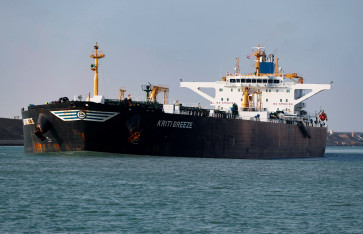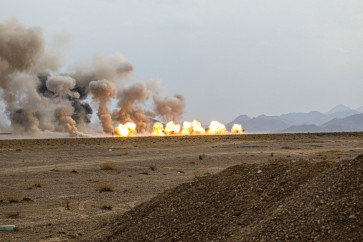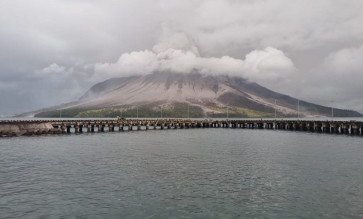Big infrastructure deficit the highest barrier to investment
President Susilo Bambang Yudhoyono made the right decision in going ahead with convening an infrastructure summit in mid-January 2005, less than three months after being sworn in, despite suggestions of postponing the meeting due to the devastating earthquake and tsunami that devastated Aceh and Nias, North Sumatra, on Dec
Change Size

P
resident Susilo Bambang Yudhoyono made the right decision in going ahead with convening an infrastructure summit in mid-January 2005, less than three months after being sworn in, despite suggestions of postponing the meeting due to the devastating earthquake and tsunami that devastated Aceh and Nias, North Sumatra, on Dec. 26, 2004.
Roads and port infrastructure in most provinces had by then begun to crumble due to an acute lack of maintenance funds under severe fiscal restraints caused by the 1998 economic crisis.
Power shortages and rotating blackouts then began to hit many provinces in Java, Sumatra, Sulawesi and Kalimantan and several outer islands.
Five years on and after the second infrastructutre summit in 2006, investors still see infrastructure as one of the biggest hurdles when investing in Indonesia and a primary cause of economic inefficiency and uncompetitiveness.
Business leaders attending the Indonesia Summit here Thursday, which was organized by the London-based Economist media group, publisher of The Economist weekly, even ranked the country’s poor infrastructure as the biggest barrier to new investment.
The rationale is that investors favor to plow their capital in countries that have become an effective and efficient part of the global supply chain. The problem, though, is that an acute lack of electricity, poor and inadequate road networks, grossly inefficient seaports and airports have made the costs of logistics in Indonesia among the highest in Asia.
Panelists and business leaders at the conference blamed the snail-paced development of infrastructure on the government’s inability to take bold reform measures to make the investment climate in that sector conducive for private investors.
Tanri Abeng, one of the panelists at the meeting, put the blame squarely on the government’s inability to reform state companies, pointing out how almost all basic infrastructure, such as power, roads, seaports, airports and telecommunications are controlled by state companies.
“But most of the 158 state firms are quite inefficient. Their combined profits last year were only US$7 billion. In Malaysia, state-owned oil company Petronas alone booked an income of $20 billion,” added Tanri, who in 1998 became the first state-owned-enterprises minister.
Inadequate infrastructure not only impairs the economy’s competitiveness, as production and distribution costs are made much higher than those in other countries, it also hinders access to public services such as health, education and market facilities, thereby hampering poverty alleviation.
President of heavy equipment company Caterpillar Asia Kevin Thieneman agreed, pointing out that the biggest barrier to private investment in infrastructure was land acquisition.
“The problem is land and land,” Thieneman said, adding that the arduous, complex procedures for land acquisition make it the biggest factor of uncertainty regarding project costs.
Yet more discouraging is that the government is still in the process of drafting a law on land acquisition for public interests, such as infrastructure, which, given the current adverse relationship between the government and parliament, may only be completed later this year.
As the new law has to be supported with a series of government regulations stipulating the technical details for their enforcement, we can expect a more investor-friendly land acquisition legislation only next year.
The government has set up several supporting facilities to help expedite infrastructure financing such as an infrastructure finance company in a joint venture with the World Bank and Asian Development Bank and a land revolving fund and a land price-capping instrument.
However, their financing capability is quite small, compared to the hundreds of billions of dollars needed for infrastructure spending within the next five to 10 years. They will serve more as a catalyst for project creditworthiness.
So pessimistic were many businesspeople about the policy direction in infrastructure that they dismissed an announcement of $140 billion in infrastructure spending over the next five years made by Gita Wirjawan, chief of the Investment Coordinating Board, as wishful thinking.
Being a “salesman,” Gita, also speaking at The Economist conference, tried to hype the outlook of Indonesia’s economic prospects by pointing to the programs of building tens of thousands of kilometers of toll roads, and tens of thousands of megawatts of power generation within the next few years.
However, most business leaders at the conference seemed skeptical, taking into account the poor record over the last five years.
The government built only about 120 kilometers of toll roads over the past five years and completed less than 50 percent of the 10,000 megawatts in new power generation capacity launched under a crash program to cope with the power crisis in early 2006.









